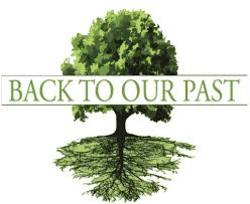Moses LINTON (1562–1622) emigrant
Welcome to the LINTON Chronicles
Moses LINTON (1562–1622) emigrant
page established 2010 ![]()

Linton Research Fund Inc., Publication © 1987-2023 "Digging for our Roots"

Moses LINTON (1562–1622) emigrant
8th great-grandparents of Annie Lucretia CRONK (1888-1956)
9th great-grandparents of Kirk Louis LINTON (1914-1987)
Terry L. Linton © 1975
Linton Research Fund Inc., Publication © 1995
The Virginia Lintons (Brief Historical Sketch) (Terry L. Linton, © 1995) (Linton Research Fund, Inc., Publication © 1995) (printed in Spotsylvania County, Virginia. USA.)
LINTON & BIRD CHRONICLES, Volume V, Issue 3, Fall © 2010, ISSN 1941-3521
Moses LINTON (1562–1622) emigrant was the son of Moses LINTON (1525–1586) & Maybella MAND (1535–1594)
Moses was born in 1562 in York, Yorkshire, England and died in 1622 on Somer Island, Somers Isles, Bermuda.
Moses married Mary in 1612 in York, Yorkshire, England. Mary was born in York in 1565.
Moses & Mary had four known children:
Anthony LINTON (1614–1695); William LINTON (1618–1680); Moses LINTON (1620–?); John LINTON (1622–)
Elizabeth LINTON (1645-1672) was the daughter of Moses LINTON (1613-1693) and Elizabeth. Moses was born in 1613 in Kecoughtan, Elizabeth Cittie, ode Princes Ann County, Virginia. According to historian, William Strachey (1572-1621) 2, Kecoughtan was the name of the Algonquian Native Americans village living there when the English explorers and colonists arrived and received their first welcome in America in 1607, in the present-day Hampton Roads area, Virginia. The tribe remained generally friendly to them until the summer of 1609, when President John Smith (1580-1631) sent Captaine Martin to forcibly take over the island inhabited by the Nansemonds, across the mouth of the James River. A company of 17 men mutinied from Martin and absconded to Kecoughtan to buy corn, where they were all killed. Martin abandoned the Nansemond’s island and returned to Jamestown.
In 1608, Elizabeth’s grandfather and brothers had been ship wicked on the Somers Isles, now Saint Charles, Bermuda, with Master William Strachey (1572-1621). Esquire, William LINTON 1590-?) later left the Kecoughtan, Elizabeth Cittie Colony and his brothers and resettled on Somers Isles. William became a sugarcane plantation owner there and left many Linton descendants including an island named after him, Linton Island. 3
The "Sea Venture" was the flagship of Admiral Sir George Somers’ relief fleet dispatched from England in June, 1609 to re-supply and revive the starving Jamestown colony in Virginia. In late July the fleet sailed into a hurricane and Admiral Sir George Somers’ flagship was separated from the other vessels. "For three days and four nights, all hands — crew and passengers, noblemen and commoners — pumped, bailed, cast trunks and barrels overboard, and jettisoned much of the ship’s rigging, while sailors, lighting their way with candles, stuffed the leaking hull with whatever came to hand, even beef from the ship’s larder," Columbia University historian Alden T. Vaughan has said. "Many distraught souls, resigned to a watery death, bid their friends farewell or took refuge in drink. But ‘it pleased God’, [a] survivor gratefully recalled, to push the ‘Sea Venture’ within three-quarters of a mile of Bermuda, where it ‘fast lodged and locked’ between coral boulders. "All 150 passengers and crew rode the ship’s boats to solid land." The castaways spent 10 months in Bermuda, constructing two new vessels — "Deliverance" and "Patience" — out of local cedar and parts which were salvaged from the "Sea Venture." 4 5 They eventually reached Virginia in May, 1610 but when reports of their time in Bermuda reached England plans were set in motion which resulted in the permanent settlement of the island in 1612.
Carpenter Moses and family set sail on June 2, 1609, and departed London harbor. Their intended destination was Jamestown, Virginia. The Sea Venture wrecked between two reefs off the shores of Bermuda, on July 28, 1609. All of approximately 150 passengers safely made land. Two pinnaces, were built during the following nine months, the "Deliverance" and the "Patience". These vessels sailed on to Virginia on May 10, 1610, leaving two men behind. 6 Carpenter Moeses Lynton & family were listed as being on board the pinnaces Deliverance. 7
According to William Strachey (1572-1621) 8in 1610, the colonists including Captain Radcliffe and Elizabeth’s grandfather, carpenter, William LINTON Esquire (1590-?) and his brothers, Moses, John and Joseph Linton then built Fort Algernon at Old Point Comfort beside the main Kecoughtan village. 9 After the arrival of Lord Delaware, the English seized the natives' land on July 9, 1610 by luring them out of their village with a tambourine player, then attacking them. The surviving Kecoughtans fled to merge with other Powhatan groups. On the same date in 1610, the Elizabeth City Parish was founded. The area and the parish has since been continuously occupied. Renamed St. John's Episcopal Church in 1830, the parish is the oldest English-speaking parish in the United States today. Kecoughtan became part of Elizabeth River Shire in 1634, and Elizabeth City County in 1637. 10 In the 1690s, Kecoughtan became part of the newly incorporated Town of Hampton, which later became an independent city. Elizabeth City County and its only incorporated town, Phoebus, both agreed to a consolidation with Hampton in 1952, forming the current City of Hampton. 11
Elizabeth LINTON Ball was the 5th great-granddaughter of John LINTON (1450-?) of Ode Wynkill, Parish, Wynkill, County Staffordshire, England.
Please Note: Kirk Louis LINTON’s (1914-1987) mother, Annie Lucretia CRONK (1888-1956) was the 13th great-granddaughter of this same John LINTON of Ode Wynkill. Kirk’s father, Charles Edward LINTON (1890-1958) Linton ancestors were Quakers who had settled Bucks County, Pennsylvania and originally from Linton Parish in Northumbria, Scotland.
__________________
Footnotes:
- The Virginia Lintons (Brief Historical Sketch) (book, Terry L. Linton, © 1995) (Linton Research Fund, Inc., Publication © 1995) (printed in Spotsylvania County, Virginia. USA.)
- Smith, John (1907) [1624]. The Generall Historie of Virginia, New England & the Summer Isles, Together with The True Travels, Adventures and Observations, and A Sea Grammar.Edited by J. MacLehose.
- Jourdain, Sylvester (1610). A Discovery of the Bermudas. London: John Windet.
- Strachey, William (1625). "True Reportory of the Wrack, and Redemption of Sir Thomas Gates Knight" (msdoc). In Purchas, Samuel. Haklvytvs posthumus, or, Pvrchas his Pilgrimes 4. London: William Stansby.
- Wright, P.M. (1962) The Sea Venture Story. Bermuda Press.
- Masden, RG (December 1905). "Ships in the Reign of James 1st". Transactions of the Royal Historical Society (New Series) (Royal Historical Society) 19: 309–342. doi:10.2307/3678236.
- Lefroy, John Henry (1879). Memorials of the Discovery and Early Settlement of The Bermudas or Somers Isles, 1515–1685 I. London: Published 1877 Longmans, Green, and Company. Memorials of the discovery and early settlement of the Bermudas or Somers Islands, 1515-1685. Comp. from the colonial records and other original sources, by Major-General J. H. Lefroy. Published 1879 by Longmans, Green, and co. in London.
- Strachey, William (1625). "True Reportory of the Wrack, and Redemption of Sir Thomas Gates Knight" (msdoc). In Purchas, Samuel. Haklvytvs posthumus, or, Pvrchas his Pilgrimes 4. London: William Stansby.
- The Virginia Magazine of History and Biography, Volume 14, page 39-44
- Chisholm, Hugh, ed. (1911). Elizabeth City County Virginia,Encyclopedia Britannica (11th ed.). Cambridge University Press
- Hampton History and Facts. (1978) Published by City of Hampton, Virginia.
Direct Linage Line:
Moses LINTON (1562-1622) emigrant
William LINTON (1618-1680)
John LINTON (1645-1700)
John LINTON (1670-1726)
2nd John LINTON (1715-1759)
3rd Annie LINTON (1744-1798)
4th Daniel MILLS (1784-1847)
5th Peter MILLS (1800-1855)
6th Sarah Anna "Susanna" MILLS (1833-1866)
7th Charles Fenton CRONK (1852-1918)
8th great-grandparents of Annie Lucretia CRONK (1888-1956)
9th great-grandparents of Kirk Louis LINTON (1914-1987)
10th great-grandparents of Kenneth Edward LINTON & Terry Louis LINTON

Linton Research Fund Inc., Publication © 1987-2023 "Digging for our Roots"
Main Menu
Linton Research Fund, Inc., HOME PAGE
LINTON Chronicles Table of Contexts
LINTON Ancestors in the Revolutionary
LINTON Ancestors in the Civil War 1861-1865
BIRD Chronicles Table of Contents
Bird Ancestors in the Revolutionary War
BIRD Ancestors in the Civil War 1861-1865
Today's Birthdays & Anniversaries
History of the Linton Research Fund Inc., LINTON & BIRD Chronicles
LINTON & BIRD Chronicles on Facebook
![]() "Thanks for Visiting, come back when you can stay longer" Terry Louis Linton © 2007
"Thanks for Visiting, come back when you can stay longer" Terry Louis Linton © 2007
Linton Research Fund Inc., Publication © 1987-2023 “Digging for our roots”
LINTON & BIRD Chronicles
Established 1984
Quarterly Publication of the Linton Research Fund Inc. ![]()